It could be, but the presence of a tissue tag in an animal’s ear does not automatically mean that the animal has a genomic evaluation. The tag merely shows that a tissue sample was physically taken from the animal. There are a number of steps after this before an animal receives a genomic evaluation.
Returning tissue samples
Having tagged an animal and captured the tissue sample, the farmer must return the sample to the lab via post. There could be animals which have a tissue tag applied, but the tissue sample was never returned.
Tissue extraction in lab
Once a sample arrives in the lab the tissue is extracted from the vial. At this point, a very small percentage of vials are found to be empty as a tissue sample was not collected when the animal was tagged (similar to an empty BVD sample).
DNA extraction
The lab then proceeds to extract the animal’s DNA from the tissue. A small percentage of samples (<1%) are found to have poor quality DNA at this point. These samples are said to have a ‘low call rate’.
Ascertaining the genotype from the DNA
DNA is placed on a chip and the animals genotype is established. The genotype is then sent to the ICBF to be analysed and included in the animal’s genetic index (Euro-Star/EBI)
Inclusion of genotype in an evaluation
When the genotype information enters the ICBF database, a number of quality checks are carried out immediately:
- Duplicate check: ICBF checks that the genotype is not an identical match to any existing genotypes already in the database. An identical match means that the same animal has been sampled under two different tag numbers. This is usually due to a mix up when tagging animals on farm.
- Parentage verification: If the animal’s parents have genotypes in the database, a parentage verification check can be carried out. The breed check can also be carried out.
- Sex check: The animal’s sex can also be checked to ensure it matches what was recorded at birth.
Once the genotype passes these checks, it can be included in the next evaluation run.
So, will the animal have a genomic evaluation as soon as it passes these checks?
No. Evaluations are currently run 3-4 times per year. Approximately 4-6 weeks prior to an evaluation publication date all of the data in the ICBF database is extracted. For a genotype to be included in an evaluation it has to be in the database before the data extraction takes place. Even if a genotype enters the database one day after the extraction date, it cannot be included until the next evaluation which may not be published for another 4-5 months. The length of time between tagging an animal and a genomic evaluation being published will depend on when the tissue sample is returned to the lab and the evaluation publication schedule. It could range between 8 weeks and 25 weeks.
So, how do I know if the animal has a genomic evaluation?
Wherever ICBF displays the Euro-Star details for animals, the genomic status is also displayed.
ICBF Animal Search (desktop version)
A green text bar with the wording “Genotype included in evaluation” is displayed on the Animal Search for animals with a genomic evaluation (see figure 1). If there is no green bar, the animal does not have a genomic evaluation. In some cases, you will see a yellow bar with the text “Valid DNA sample received (SNP)” (see figure 2). This means that the animal’s genotype is in the database, but is not yet included in its evaluation. The genotype should be included from the next publication date and a ‘green text bar’ will appear.
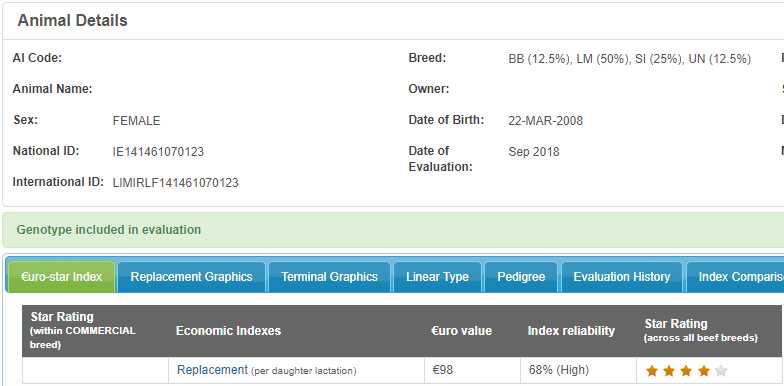
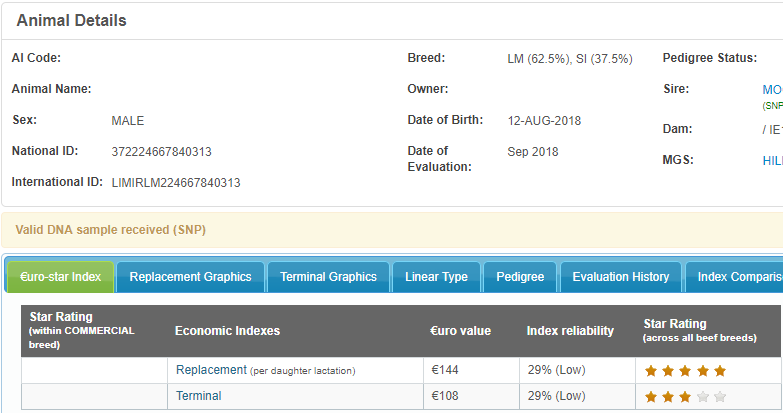
ICBF Animal Search (app version)
A green line of text is also displayed in the app version of the Animal Search (see figure 3). The app is free to download for all Apple and Android phone users.
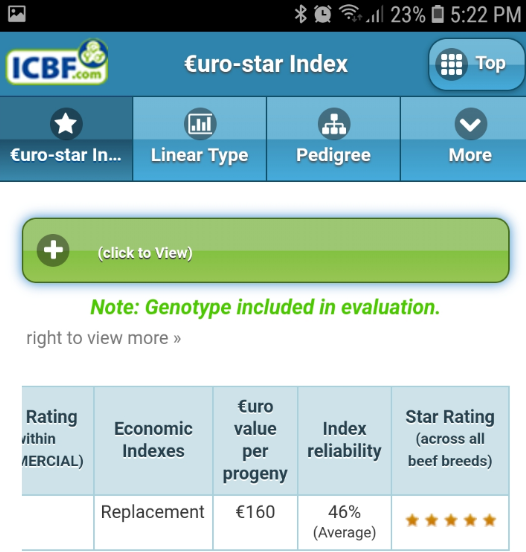
ICBF HerdPlus reports
HerdPlus reports use a DNA helix symbol to denote the genotype status of an animal (see figure 4). Printed reports go out of date, so it is important that you are looking at an up to date report. The date the report was printed is detailed at the top of the page in the reports.
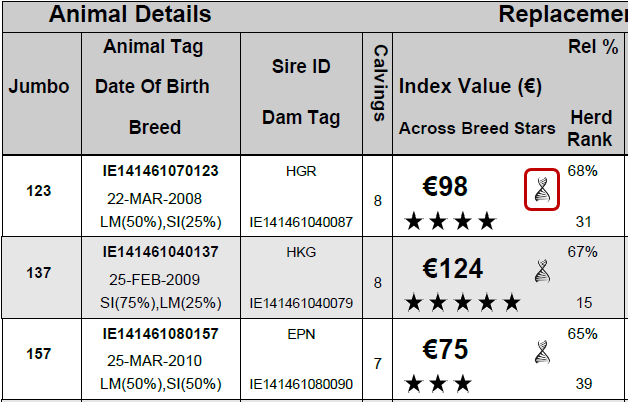
Mart Screens
Most marts are now displaying the Euro-Star details of animals. The mart screens also show the genomic status of the animal with a simple ‘Yes/No’ (see figure 5).
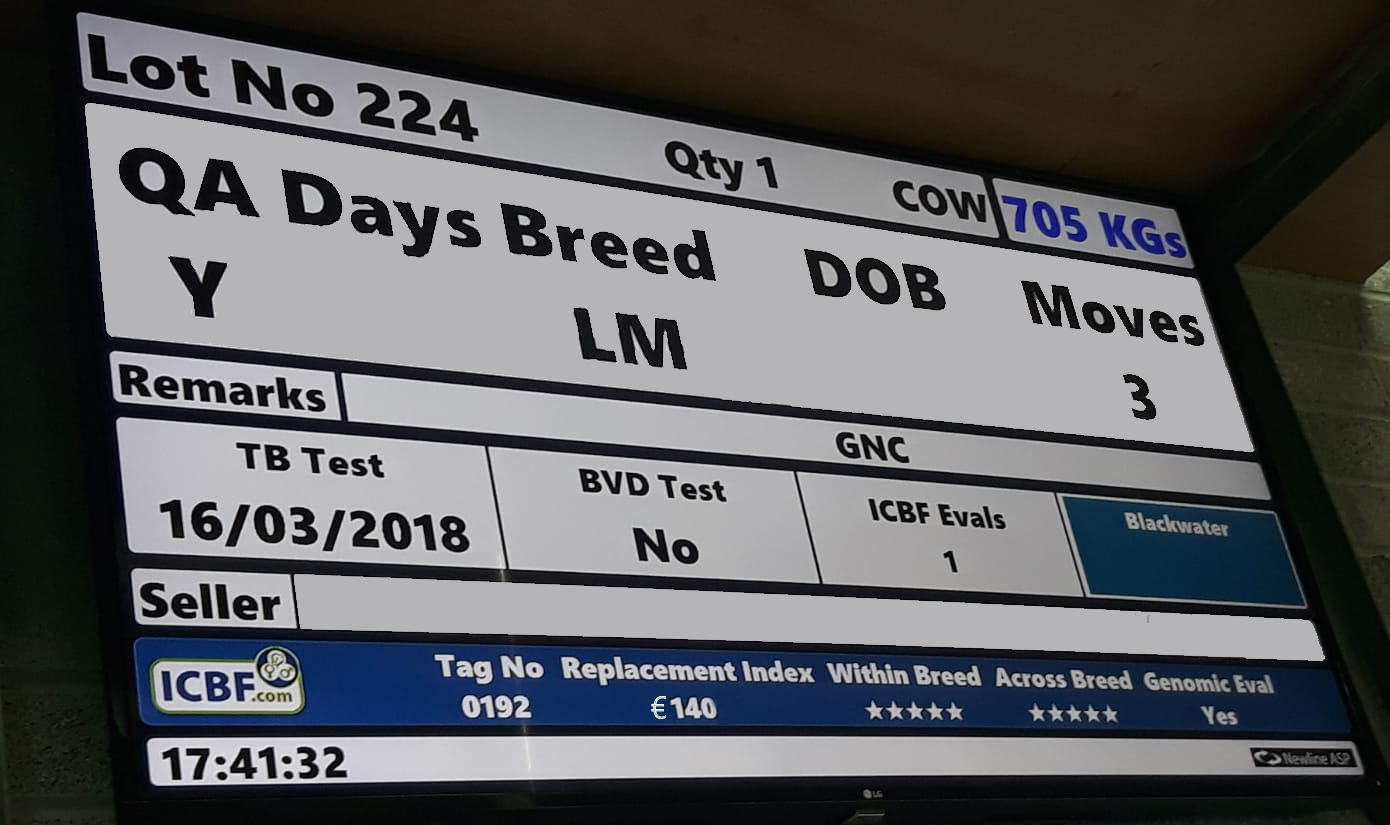
You cannot assume that an animal with tissue tag in its ear has a genomic evaluation. The most reliable way to check the genomic status of an animal is to search for its Euro-Star index in the ICBF Animal Search.
For more information, please call ICBF on 023/8820452 or email [email protected].
